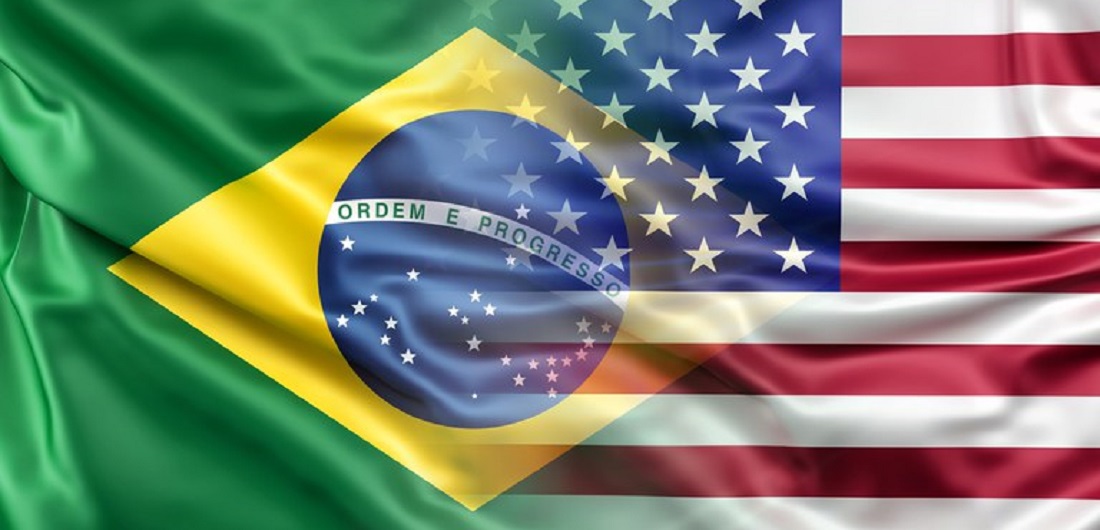
US-Brazil trade growth leads up to a possible new record
Apr, 18, 2022 Posted by Gabriel MalheirosWeek 202217
After US-Brazil bilateral trade grew to a record in 2021, the American Chamber of Commerce (Amcham Brazil) had initially been expecting a more moderate pace in 2022. However, the data from the first quarter struck positively, reinforcing the view that trade can still reach new records this year despite uncertainties.
Between January and March 2022, the sum of exports and imports, aka the trade flow, reached US$ 19 billion, an increase of 40.2% compared to the same period in 2021. It was the highest value registered for the first quarter since 1989.
“We had the perspective that bilateral trade would continue to grow in 2022, albeit more moderately, given uncertainties like global inflation, the pandemic, the possible economic slowdown in China, and geopolitical and climatic events that affect the economy around the world. However, this first quarter came on strongly,” says Abrão Árabe Neto, the executive VP of Amcham Brazil.
The most positive aspect, according to him, is that both exports from Brazil to the US and Brazilian imports from the US grew. “In both aspects, we saw, in the first quarter, the best values ever recorded.”
Brazilian exports to the US grew 35.9% in the first three months of 2022, compared to the same period in 2021, reaching US$ 7.6 billion. Brazilian purchases from the US totalled US$ 11.4 billion, up 43.2%.
Growth was widespread in terms of exports, including nine out of the ten most important products in the export basket. In absolute terms, the largest participation was in crude oil, whose sales, representing more than 10% of total exports to the US, grew by almost 167%. Such increase was due to heightened prices (48.5%) but mainly due to increase shipments (79.5%), observes Árabe Neto. Iron and semi-finished steel products continue to dominate the list with a share of almost 14%, albeit at a slower growth pace in the first quarter (4.4%).
Another highlight was the export of beef, which still represents only 3% of US-Brazil trade, but whose growth in the first quarter was 725.5%, making Brazil the largest supplier of bovine meat to the Americans toppling Canada, Mexico, and Australia, according to Amcham.
“Trade was briefly interrupted in 2017 due to health issues that closed the American market. In 2020, trade got back on track and was already growing at the end of last year,” says Árabe Neto. “Our productive capacity in the sector is very high, as is our competitiveness. We are very well positioned, and it is good news that we are starting to see bilateral trade consolidated.”
See below the track record of Brazilian containerized exports to the US from Jan 2019 to Feb. 2022. The data are from DataLiner.
Brazilian container exports to the US |Jan 2019 – Feb 2022| TEU
Source: DataLiner (click here to request a demo)
Growth wasn’t specific for one product in imports also. Gains occurred in eight out of ten items in the import list. Many variables that contributed to last year’s record persist, such as the purchase of natural gas to fuel thermoelectric units, which increased 263.9% to US$ 2.1 billion in the first quarter of 2022. The increase in pricing (232.5%) explains the growth more than the increase in the imported quantity (9.4%).
The National System Operator (ONS) has put a green flag on the electricity bill for the year, suggesting that mass activation of thermoelectric plants is not expected. Regardless, Amcham believes that demand for natural gas from the US will remain high in the first half of the year. “Possibly, in the second half of the year, we will see a cooling off. But, if there is a reduction in volume, values may remain high,” says Árabe Neto.
The Brazilian demand for other US energy products – such as fuel and crude oil and coal – remained high in early 2022. Árabe Neto also draws attention to the growth of 90% in fertilizer purchases due to increased access to Russian agricultural inputs amid the war in Ukraine.
Amcham refutes the discourse that the conflict in Eastern Europe can be a commercial opportunity for the US-Brazil trade relationship because, in aggregate terms, the global economy and world trade consequences are negative, says Árabe Neto. Still, he recognizes that the energy sector (oil, gas, coal), steel and agricultural inputs be caught up in increased trade, either by the price factor or by the greater volume.
Source: Valor Econômico
To read the full original article, please go to:
-
Other Cargo
Jan, 30, 2024
0
Cosmetics exports from Brazil post record USD 911 M in 2023
-
Shipping
Oct, 18, 2023
0
Raizen, Wartsila to research use of ethanol in maritime transportation
-
Ports and Terminals
May, 26, 2022
0
The Port of Imetame has received R$ 200 million in investments
-
Grains
Sep, 28, 2022
0
Anec: forecasts of soybeans, bran, and corn exports revised downward


